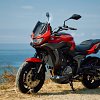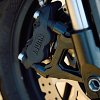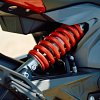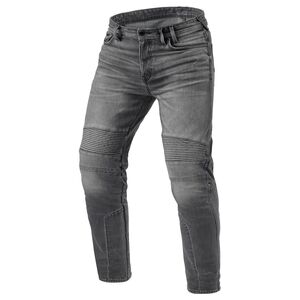Wind dances off my helmet. Cattle graze along roadside pastures. The rising sun paints nearby hills in hues of gold. Only the gurgle of the CSC RX6’s exhaust disturbs the calm of this late-spring morning. At this moment, I remember why I love traveling on a motorcycle. One moment later, the maintenance icon illuminates on the bike’s dash.
Just 200 miles into an 800-mile road trip, the timing couldn’t be worse. Several scenarios race through my head. What if there isn’t a shop nearby? What if I find a shop but they can’t work on my bike? What if they can but don’t have the parts? How long will parts take to deliver? Do I have enough money for a hotel? These are the kind of worries that easily pop into your mind when you're riding a brand of motorcycle that's unfamiliar and lacking a track record.
Before spiraling into a panic attack, I exit the highway and contact CSC Motorcycles. The answering technician explains the situation and helps me clear the error. In a matter of minutes, I’m back on the road. Should the issue require further attention, the company's website lists its nationwide service centers. CSC will rely on this network more than ever, as it introduces the 2024 RX6, a new sport-tourer powered by a Norton-designed engine, that will have its customers venturing farther from home.
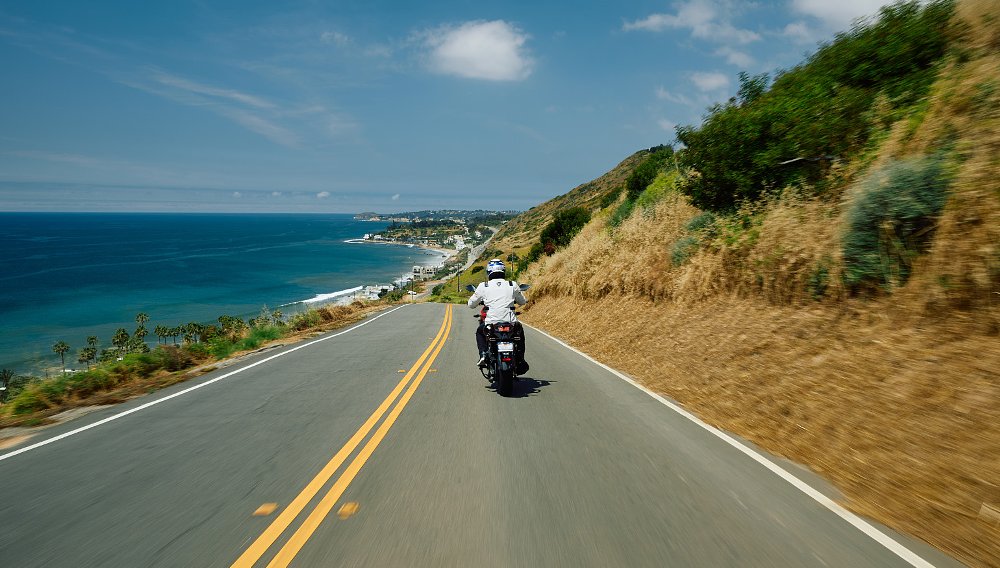
Something borrowed
Let’s set the scene. It’s 2018. Norton reveals the Atlas Nomad and Atlas Ranger. Before the British marque pulls the covers off the two scramblers, it licenses its parallel-twin engine to Chinese manufacturer Zongshen. Neither the Nomad nor the Ranger makes it to market before Norton falls into administration (the British equivalent of bankruptcy) in 2020. Instead, the SR650 engine debuts in the 2021 Cyclone RX6. That same mill rests at the heart of the CSC-branded RX6.
While the twin twins share the same basic architecture, Zongshen’s version is British engineering by way of China. Boasting eight valves, dual overhead cams (DOHC), a 270-degree crankshaft, and an 11.5:1 compression ratio, it mimics much of Norton’s original blueprint. Yet, the CSC RX6 claims 70 horsepower (at 8,500 rpm), while Norton listed the Atlas series at 84 peak ponies (at 11,000 rpm). Both powerplants generate around 45 foot-pounds of torque (claimed).
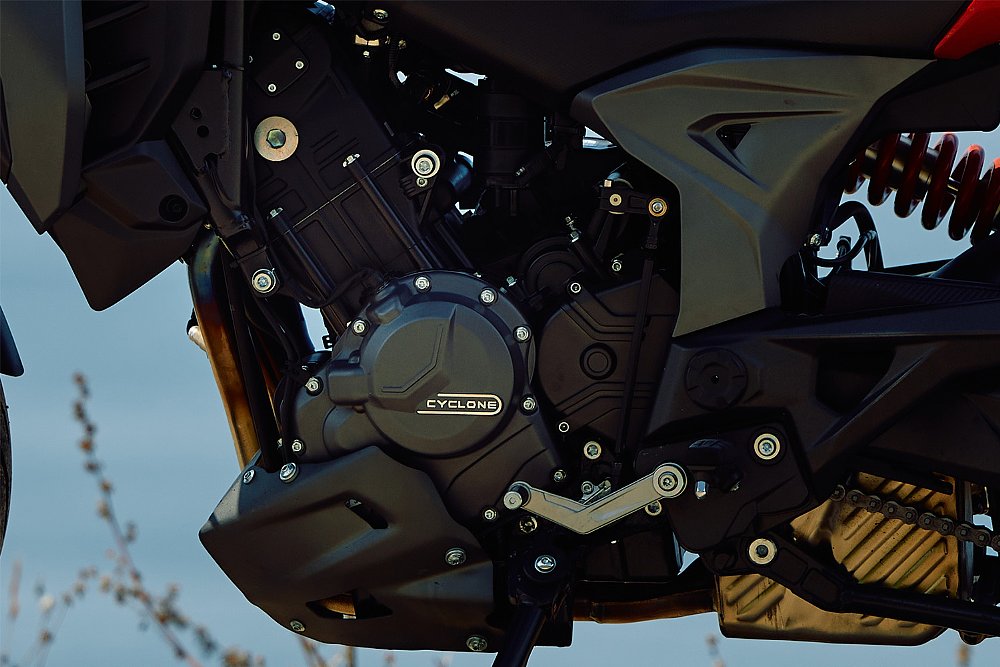
As the numbers suggest, the engine produces much of its power in the upper range. That doesn’t mean it’s slow out of the gate. Despite Delphi electronic fuel injection and a cable throttle, initial pickup resembles the abrupt fueling of early ride-by-wire systems. Luckily, the sport-tourer suffers none of the clutch inconsistencies Ari struggled with on the 2020 CSC RX4. That's a godsend on the RX6, as short gearing forces the rider to dance up and down the gearbox from stoplight to stoplight. The opposite is true out on the highway.
At 75 mph, the long sixth gear spools the RX up to 6,000 rpm. That rev range minimizes vibrations, thereby maximizing comfort. But in return, it saps throttle response. When passing with any urgency, I often downshifted to fifth gear, riding the torque peak at 7,000 rpm to complete the maneuver. However, the vibes coursing through the pegs, handlebars, and gas tank prompted an upshift soon after.

The borrowed mill may not ooze refinement, but it injects some raw character into the class. Pin the throttle in the meat of the powerband and a rousing “womp” issues from the low-mounted exhaust. Roll off the gas and engine braking kicks in with a sledgehammer’s subtlety. Yet even with the twin’s raucous character, the RX6 retains its sport-touring pragmatism.
Sticking to highways, the model averaged 47 miles per gallon, nearly meeting its claimed 48-mpg estimate. Adding surface streets to the equation dipped that figure into the low 40s. Still, with the middleweight twin sipping from a 5.5-gallon fuel cell, the RX6 regularly returned over 200 miles to the tank. It’s clear that the Norton-engineered mill is the crown jewel of CSC’s new flagship model. It’s the hodgepodge that Zongshen surrounds its two-piston wonder with that’s a bit more perplexing.
Something old, something new
For a bike starting at $7,195, the RX6 comes dressed in a bundle of name-brand components. A KYB inverted fork and monoshock yield over five inches of travel (at both ends), while only lifting seat height to a welcoming 32.3 inches. Bosch ABS governs twin two-piston calipers up front, each of which hails from Brembo subsidiary J.Juan.
These suppliers do more than buoy the RX6 with name recognition. The stock suspension setup remains responsive on twisty backroads without sacrificing comfort over the long haul. The rebound-adjustable front end limits dive under heavy braking. The rear shock also stays supportive under acceleration. Both hold up to bumps and sharp-edged potholes, as well.

I should note that the pre-production unit we tested rolled on Timsun TS-690F tires. CSC slates Pirelli Angel GT rubber for the U.S. production model, despite the little-known tires performing admirably during my 800-mile round trip between Los Angeles and San Jose. Aside from the knock-off Pirellis, the rest of the chassis will remain intact, including the J.Juan braking system. At the fore, dual clampers paired to 320 mm discs provide predictable stopping power. What’s more surprising is the feedback and one-finger control afforded by the front axial master cylinder.
These components elevate the overall quality of the RX6, but with its tubular steel frame and aluminum swingarm, the bike still weighs more than the competition. Fully fueled, our pre-production unit weighed in at 542 pounds on the Common Tread scales. That’s just two pounds off CSC’s reported 540-pound wet weight. That heft is only evident, though, when lifting the bike off the stand. Out on a canyon road or slogging over the super slab, that mass practically goes unnoticed. What doesn’t go unnoticed is the lack of creature comforts.
No ride-by-wire throttle equates to no rider aids. Luddites will brush off the exclusion of traction control and ride modes. It’s tougher to dismiss the lack of cruise control. Even with that omission, the RX6 fits right in with its middleweight touring peers. That bodes well for the rookie entry, considering that it costs significantly less than the established competition, such as the Kawasaki Versys 650 at $8,899, Suzuki's V-Strom 650 at $8,904, and Triumph's Tiger Sport 660 at $9,695. CSC isn't satisfied with just undercutting its competitors on price, either. It also provides some additional features that prop up the value prop.
One feature you definitely don't see on competing bikes at this price point is a system of front- and rear-facing cameras to support blind-spot detection — a rider aid only found on premium heavyweight tourers such as the Ducati Multistrada V4 and Triumph Tiger 1200 family. To be fair, I didn't find it on my test unit, either, which was a pre-production model, but CSC says that feature will be standard on the production RX6s. Two other features not on the test bike, but promised for production models, are an electrically adjustable windscreen and an electronic lock on the steering for security.
Other features include LED lighting, USB charging outlets, and a tire-pressure monitoring system, but the seven-inch, full-color TFT display takes top billing. Manufacturers often reserve high-tech gadgetry of this ilk for bikes in the five-figure price range. I hope the blind-spot detection and adjustable windscreen features I didn't get to test work well, because the TFT panel offered an imperfect user experience.

Packed with three different layouts, the seven-inch screen automatically switches between day and night modes. Aesthetically, the interface’s vibrant color palette resembles a digital slot machine, particularly in the night mode, which activates the dash’s multi-colored LED accent lights. All options prominently display the speedometer, tachometer, and gear indicator. As a result, secondary readouts like average speed, trip meter, and fuel economy are crammed into the remaining real estate.
The system also relays remaining fuel, front and rear tire pressures, and fuel range, but users must navigate to the My Vehicle pane to access that information. That’s easier said than done with the RX’s button layout. The Mode switch cycles through the system’s five screens in sequential order. Miss your intended layout and it's back on the screen carousel for another go around. The Set button jumps between options within each submenu and the Ent button confirms the user’s choice.
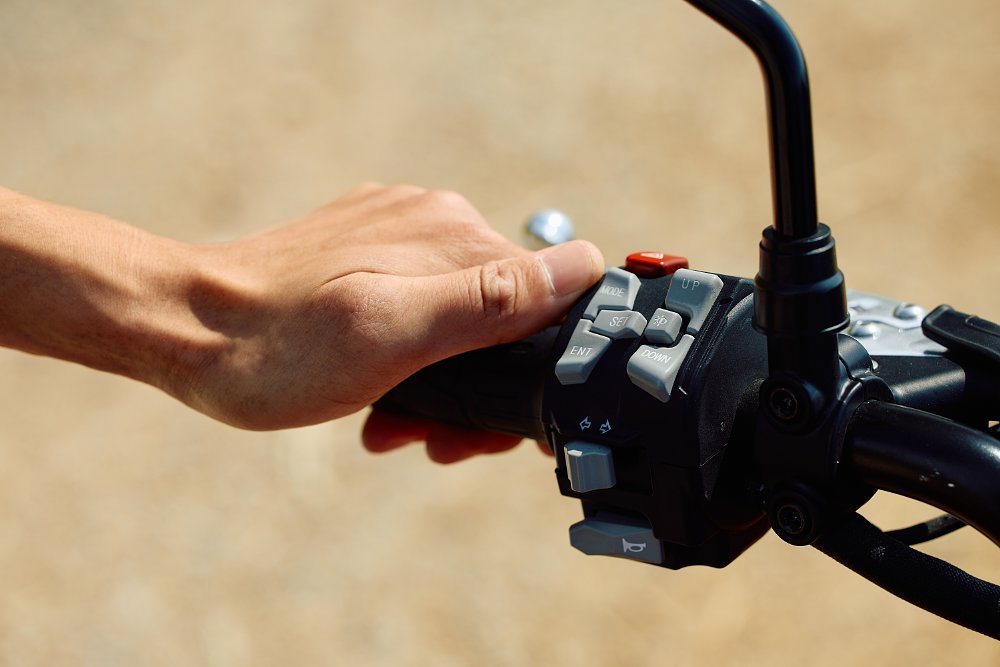
After two weeks and nearly 1,400 miles logged on the sport-tourer, I learned to cope with the system’s quirks. That doesn’t mean I faultlessly navigated the menus. Ultimately, the TFT dash is an impressive addition, even if it mishandles the finer details. That seems to sum up my experience with the RX6.
Final thoughts on the CSC RX6
CSC Motorcycles’ lineup has evolved over the last eight years. From the TT250 dual-sport to the SG400 café racer to the RX4 adventure bike, the brand's comfort zone has been small-capacity, single-cylinder motorcycles. The RX6 changes that. The sport-tourer doesn’t just raise CSC’s bar with two cylinders and 650 cubic centimeters, it does so with sophisticated componentry and improved tech. The RX6 marks a leap forward for the California brand, but it’s still a few steps away from top category contenders.
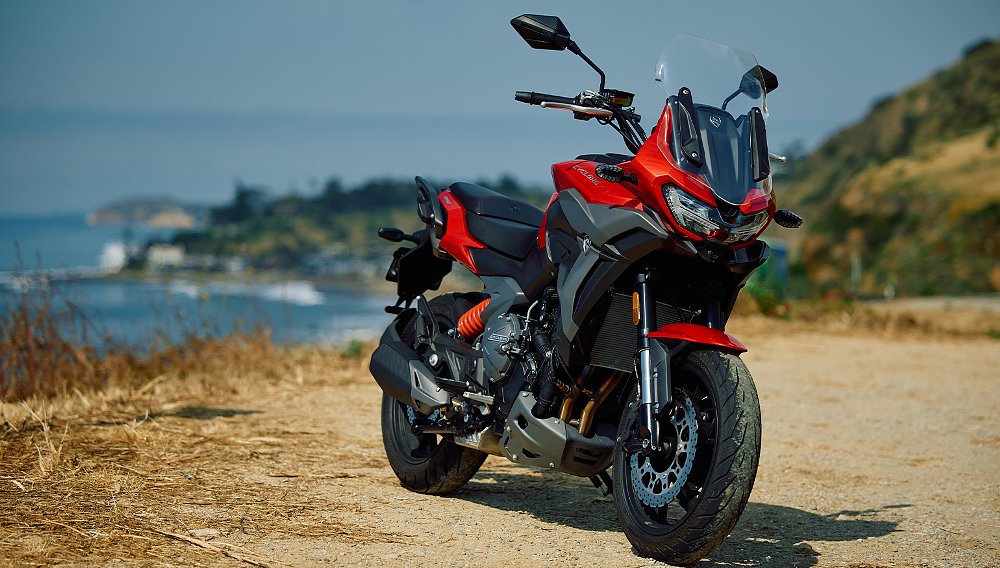
CSC hopes novel solutions like front- and rear-facing cameras push its new flagship model even closer to those segment stalwarts. We weren’t able to test that feature with our pre-production unit, but it speaks to the firm’s aspirations. Unfortunately, we’ll have to wait until late 2023 — when the 2024 RX6 begins delivering to customers — to see if CSC Motorcycles fulfills its ambitious aims.
| 2024 CSC RX6 | |
|---|---|
| Price (MSRP) | $7,195 |
| Engine | 650 cc, liquid-cooled, eight-valve, parallel twin |
|
Transmission, final drive |
Six-speed, chain |
| Claimed horsepower | 70 @ 8,500 rpm |
| Claimed torque | 45.7 foot-pounds @ 7,000 rpm |
| Frame | Steel-tube |
| Front suspension | KYB 41 mm fork, adjustable for spring preload, compression and rebound damping; 5.1 inches of travel |
| Rear suspension | KYB shock, adjustable for spring preload; 5.6 inches of travel |
| Front brake | Dual J.Juan two-piston calipers, 320 mm discs with ABS |
| Rear brake | J.Juan two-piston caliper, 260 mm disc with ABS |
| Wheelbase | 57.1 inches |
| Seat height | 32.3 inches |
| Fuel capacity | 5.5 gallons |
| Tires | Timsun TS-690F, 120/70-R17 front, 160/60-R17 rear (as tested; Pirelli Angel GT for production models) |
| Claimed weight | 542 pounds |
| Available | Late 2023 |
| Warranty | 12 months |
| More info | cscmotorcycles.com |






